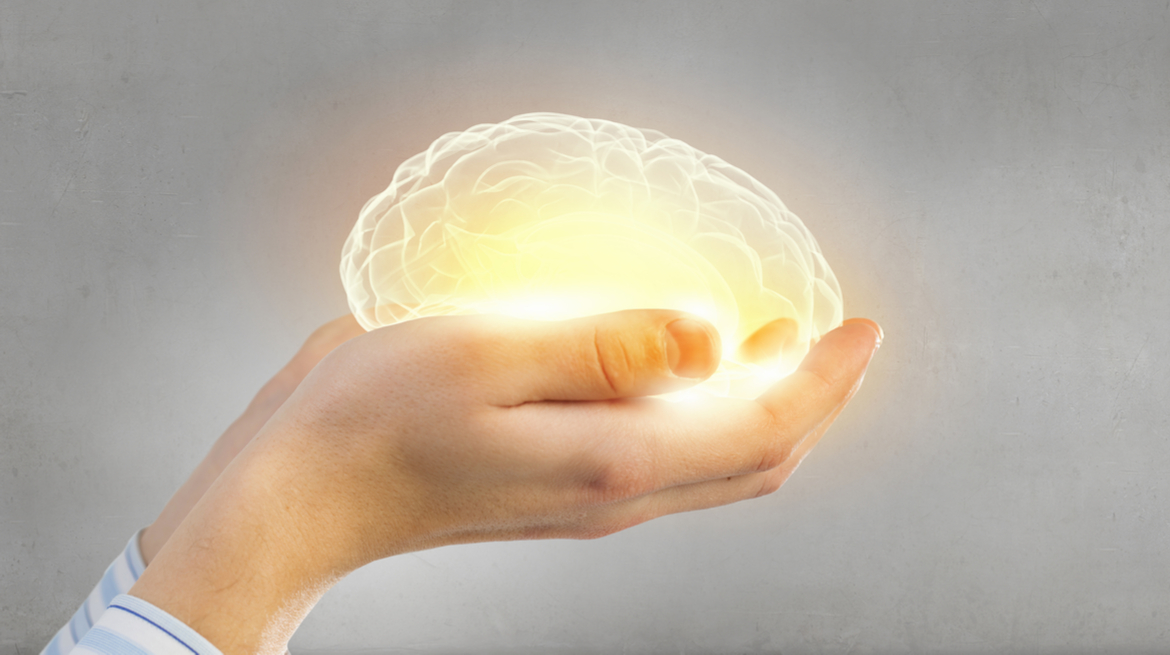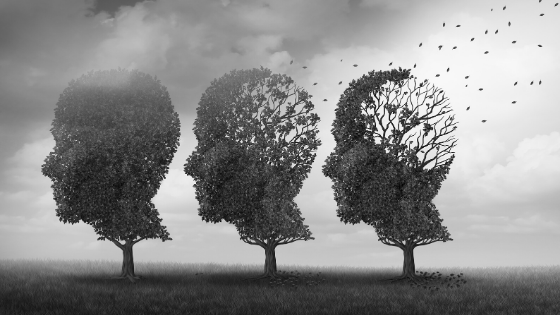The Default Mode Network (DMN) is a set of interacting brain structures first described in 2001 by the Washington University neuroscientist Marcus Raichle. It’s called that because it is most active when the brain is in a resting state. This network links parts of the cerebral cortex (thinking, decision making, higher brain functions) with deeper and evolutionarily older structures of the brain involved in emotion and memory.
The Default Mode Network influences and inhibits, other parts of the brain, especially those involving emotion and memory. It prevents signals from being interrupted or interfering with each other. Neuroimaging studies suggest that the DMN is involved in higher-order “metacognitive” activities. Activities such as self-reflection, mental projection, cognitive time travel, and the ability to interpret others’ mental states. (Sheline, Barch, Price, et al., 2009).
The Default Mode Network and Ego Connection
What is especially interesting is the connection between the DMN and the Ego. We believe the DMN is the part of our brain that is responsible for judgment, tolerance, reality testing, and a sense of self. Freud called this the “ego.” Author, Journalist, and experiential researcher Michael Pollan, in his book How to Change Your Mind (2018), referred to this area of the brain as the “me” network. This area lights up when given a list of adjectives relative to one’s self-identity. It also reacts similarly during daydreams, magical thinking, self-reflection, and when we receive Facebook likes (Pollan, 2018). Subsequently, the Default Mode Network activates “by default” when there is no task at hand.
Freud said that the ego keeps anarchic forces of the id in check, and Pollan compares this to the DMN maintaining strict connections on brain function developed over the course of our adult lives. “It appears that when activity in the DMN falls off precipitously, the ego temporarily vanishes, and the usual boundaries we experience between self and world, subject and object, all melt away,” Pollan said.
Coming From A Place of Ego
Noticing when we are coming from a place of ego instead of a place of mindful awareness can drastically change our interactions with the world. Other schools of thought sometimes refer to it as ‘getting out of your own way’ to allow your destiny or Dharmic path to unfold. This was so eloquently put by British philosopher who popularized Eastern philosophy in the west, Alan Watts (1944), “Ego, the self which he has believed himself to be, is nothing but a pattern of habits” (1966). Mindfulness and Art Therapy are ways for us to create new habits and awareness that involves the world around us instead of only ourselves.
Why Mindfulness Is So Important
What is mindfulness?
Paying attention to the present moment, on purpose, non-judgmentally.
Jon Kabat-Zinn
Current research is finding is when we try to silence the interminable flow of opinions and thoughts in our head when meditating (what some Buddhists refer to as the ‘monkey mind’) is actually the Default Mode Network! It’s the DMN flaring up when the brain has nothing better to do. Through mindfulness and meditation, we are able to silence this ‘monkey mind’ chatter and thus switch the DMN offline to bring a greater sense of calm and peace. Being in a mindful state of mind also keeps the frontal lobes on line and helps integrate experiences and feelings rather than dissociate from them (Ogden, 2019).
Using Art Therapy coupled with mindfulness, we are working to reroute our neural networks to change patterns, habits, and behaviours in the brain. If our DMN kicks in during this process, it inhibits this change from taking place. As expressed by neuroscientist and best selling author Dan Siegel, “Your mind can change your molecules”. This is why staying present and recognizing when we go “offline” is so important. Be gentle with yourself as learning anything new is a process. Then, come back into the present moment with ease. Know that the more often you do this, the more engrained these new neural networks will become, and the easier it will be to come to clarity.
Stress
When we’re stressed, our judgments become impaired and our prefrontal cortex goes offline. “Mindfulness keeps the frontal lobes online and helps integrate (information) rather than dissociate”. (Ogden, 2019). Staying mindful means tapping into the body, noticing your physical sensations, and how they come and go. Our physical sensations are not permanent; we notice this when we become mindful. We become aware that our current state of being is impermanent. This can bring us hope when the stresses of life feel awful and overwhelming.
The Defense Mechanism of Disassociation
We disassociate as a defense mechanism. The DMN is engaged. Although this behavior served humans in the past, this is an ineffective way to cope. We develop and grow through conscious awareness in the here and now. which makes disassociation no longer required. Personal growth has a lot to do with creating new habits and neural pathways in the brain instead of relying on old ways of being that do not serve our highest consciousness.
Depression and Anxiety
What is especially interesting in the study of the Default Mode Network is its correlation with depression and anxiety. Studies have shown that people who experience depression and anxiety have a more active DMN than those who don’t (Wise, Marwood, Perkins, et al., 2017). “The baseline imaging findings are consistent with those found in patients with major depressive disorder and suggest that increased connectivity within the DMN may be important in the pathophysiology of both acute and chronic manifestations of depressive illness” (Posner, Hellerstein, Gat, et al., 2013). One can imagine how ruminating over a specific issue that does not hold our body and mind’s highest good could lead to a downward depressive spiral. Mindfulness and coming into the present moment can actually help stop the rumination of upsetting circumstances and life events. Mindfulness literally makes us happier! What a wonderful tool to keep close.
References
Fisher, J., Ogden, P. (2015). Sensorimotor psychotherapy: Interventions for trauma and attachment. W.W. Norton & Company.
Kabat-Zinn, J. (2005). Wherever you go, there you are: Mindfulness meditation in everyday life. Hachette books
Ogden, P. (2019). Treating trauma faster series. Retrieved on April 24, 2019 from https://www.nicabm.com/program/treating-trauma-master-4/?del=homepagepopular
Pollan, M. (2018). How to change your mind. Penguin Press.
Posner, J., Hellerstein, D.J., Gat, I., et al. (2013). Antidepressants normalize the default mode network in patients with dysthymia. JAMA Psychiatry 70(4), 373-382. doi:10.1001/jamapsychiatry.2013.455
Sheline, Y.I., Barch, D.M., Price, J.L., et al. (2009). The default mode network and self-referential processes in depression. Retrieved on May 3, 2019 from https://www.pnas.org/content/pnas/106/6/1942.full.pdf
Watts, A. (1966). The book: On the taboo against knowing who you are. Random House Inc.
Wise, T., Marwood, L., Perkins, A. et al. (2017). Instability of default mode network connectivity in major depression: a two-sample confirmation study. Translational Psychiatry 7, e1105. https://doi.org/10.1038/tp.2017.40
Author
Charmaine Husum, DKATI, RTC, CT










